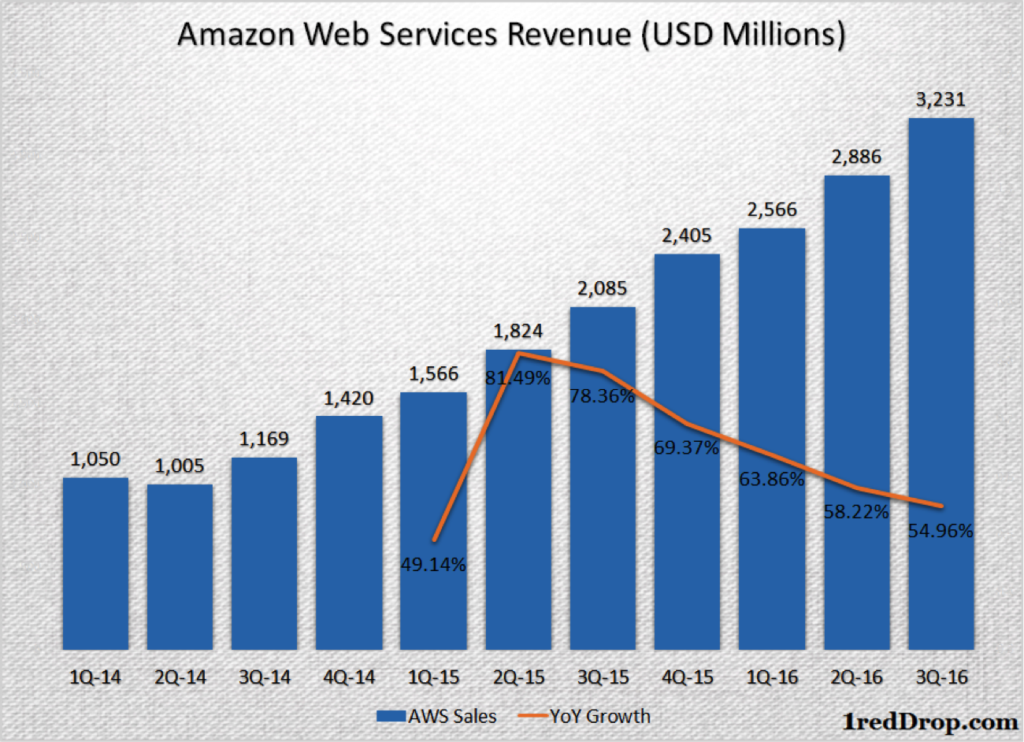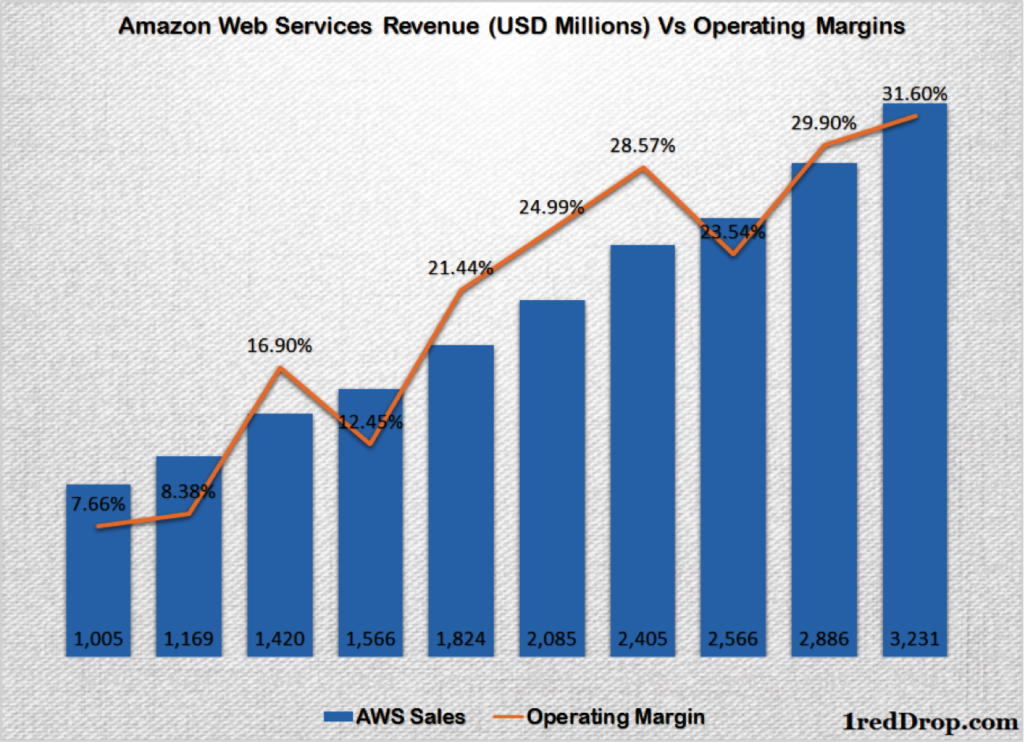As 2016 draws to a close, this would be the right time to take a closer look at the cloud industry’s growth, the impact on specific companies and how the landscape has evolved in the last eight quarters. Let’s dig a bit into the numbers, starting with the segment leader, Amazon.
Though there is lot of confusion in the industry as to who the real leader of the segment is, there seems to be no confusion about who every other player in the segment wants to compete with. It’s none other than retail giant Amazon’s technology brainchild – Amazon Web Services, or AWS.
When Oracle decided that the time had come for them to double down on their cloud initiatives, Oracle’s Chairman Larry Ellison said “Amazon’s lead is over. Amazon is going to have serious competition going forward” at Oracle’s Openworld Conference in San Francisco in September this year. Irrespective of whether or not it was a realistic threat posed by Oracle, it was an important validation of Amazon’s leadership position in the segment.

AWS revenues have grown nearly threefold in two years, from $1.17 billion during the third quarter of 2014 to $3.23 billion during the third quarter of 2016. Though the pace of growth has been coming down over time, revenues have been growing in excess of 50% year-over-year in the last four quarters despite the multi-cornered competition in the form of Microsoft, IBM, Oracle and Google.
With the most recent quarter netting more than $3 billion, AWS is already looking at annual revenues in excess of $12 billion, with no signs of slowing down. What makes this growth a big deal is that, despite the top line growing at strong double digit rates and competition on the rise, Amazon Web Services has been able to almost consistently keep increasing its margins during this entire period under discussion.

“Back in 2006, we launched S3 with a revolutionary pay-as-you-go pricing model, with an initial price of 15 cents per GB per month. Over the intervening decade, we reduced the price per GB by 80%” – Amazon
AWS’ operating margin has been increasing steadily over the last few years, and the expansion looks even more breathtaking when you consider the number of times Amazon has cut its pricing over the years. Amazon has cut its EC2 on-demand reserved instance prices 53 times since its launch, and may continue the trend for a long time. Despite the reduction in pricing Amazon has seen its profitability grow, thanks to the number of new services the company keeps adding at an alarming frequency.
In an interview to SeattleTimes, Andy Jassy, CEO of Amazon Web Services said: “There are only 24 hours in the day. There is so much that we’re doing simultaneously. We’re going to launch 1,000 significant services or features this year.”
That, in a nutshell, is the secret to the success of Amazon Web Services. As the company keeps relentlessly focusing on adding more services, it has innovated in every possible area, all the while staying close to customers so that it is able to launch services based on specific needs.
By doing that at such scale, it makes sure that it stays several steps ahead of its competitors, all the while adding more revenue streams to more than offset its price cuts.
This model of cutting costs but adding a ton of services on top of the core AWS infrastructure offerings is exactly why Amazon’s revenues and operating margins have bloated over this two-year period.
But there’s a downside to this fairy-tale growth as well, and it is the fact that margins cannot keep going up forever. It is bound to stabilize over time, but nobody can doubt that Amazon has established an unshakable strategy in the cloud industry with AWS – one that continues to help them retain the title of “the company to beat in cloud.”
In Part 2 of this series, we’ll look at how Microsoft has been growing its own cloud revenues – more silently than AWS but just as powerfully.
Recommended: The Amazon Echo Phenomenon and What it Means to the $100+ Billion Retailer
Thanks for reading our work! We invite you to check out our Essentials of Cloud Computing page, which covers the basics of cloud computing, its components, various deployment models, historical, current and forecast data for the cloud computing industry, and even a glossary of cloud computing terms.



